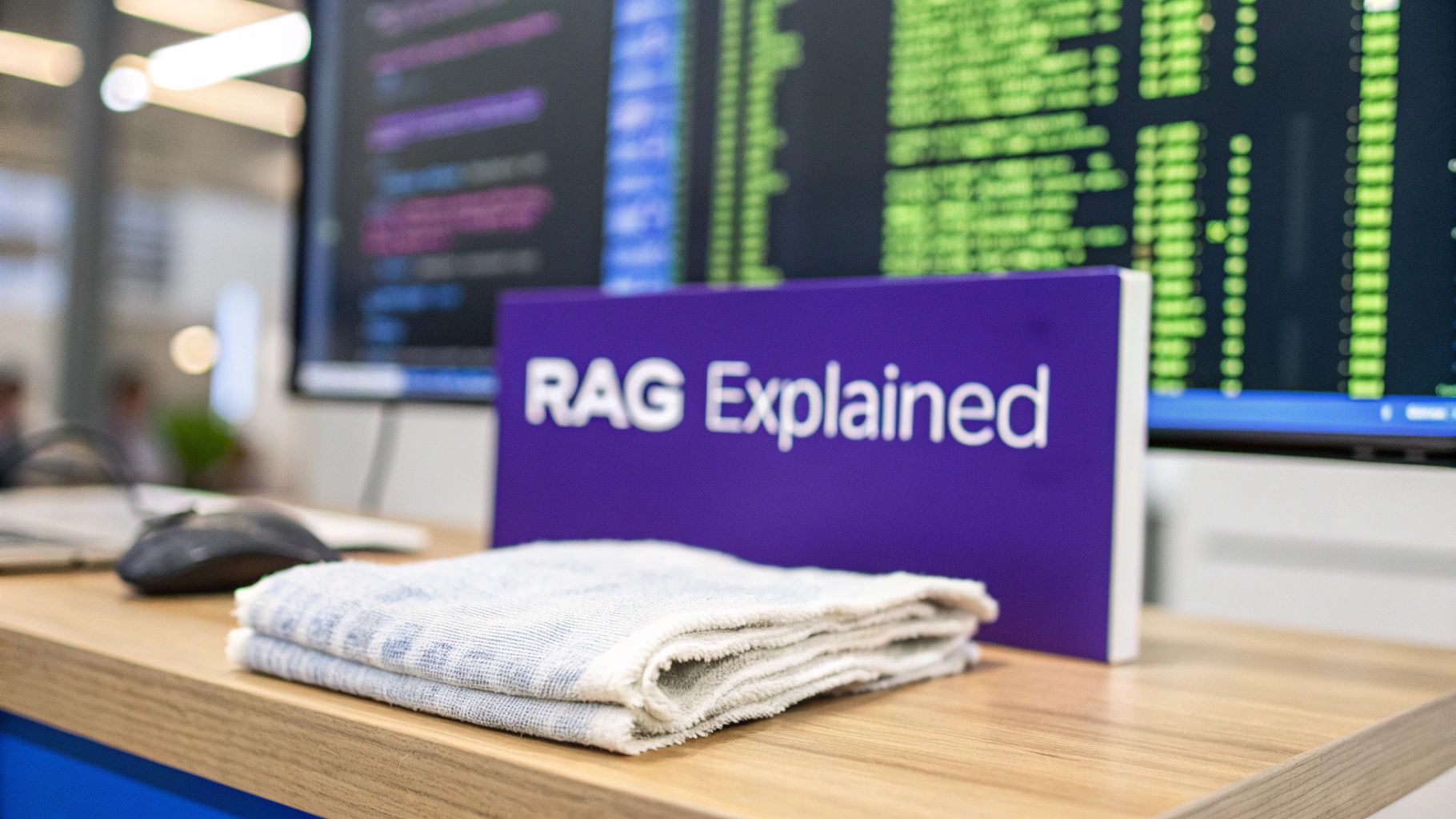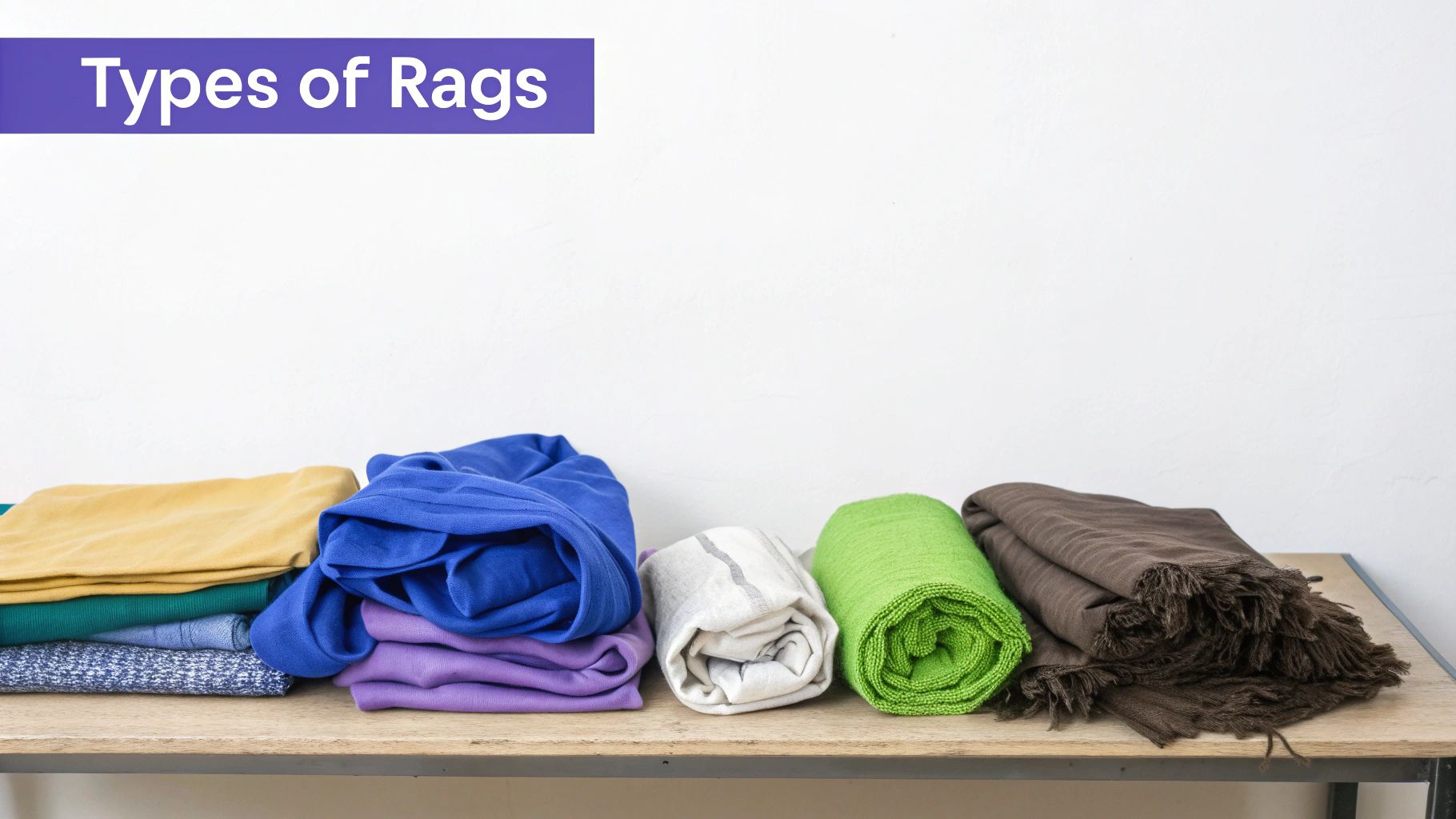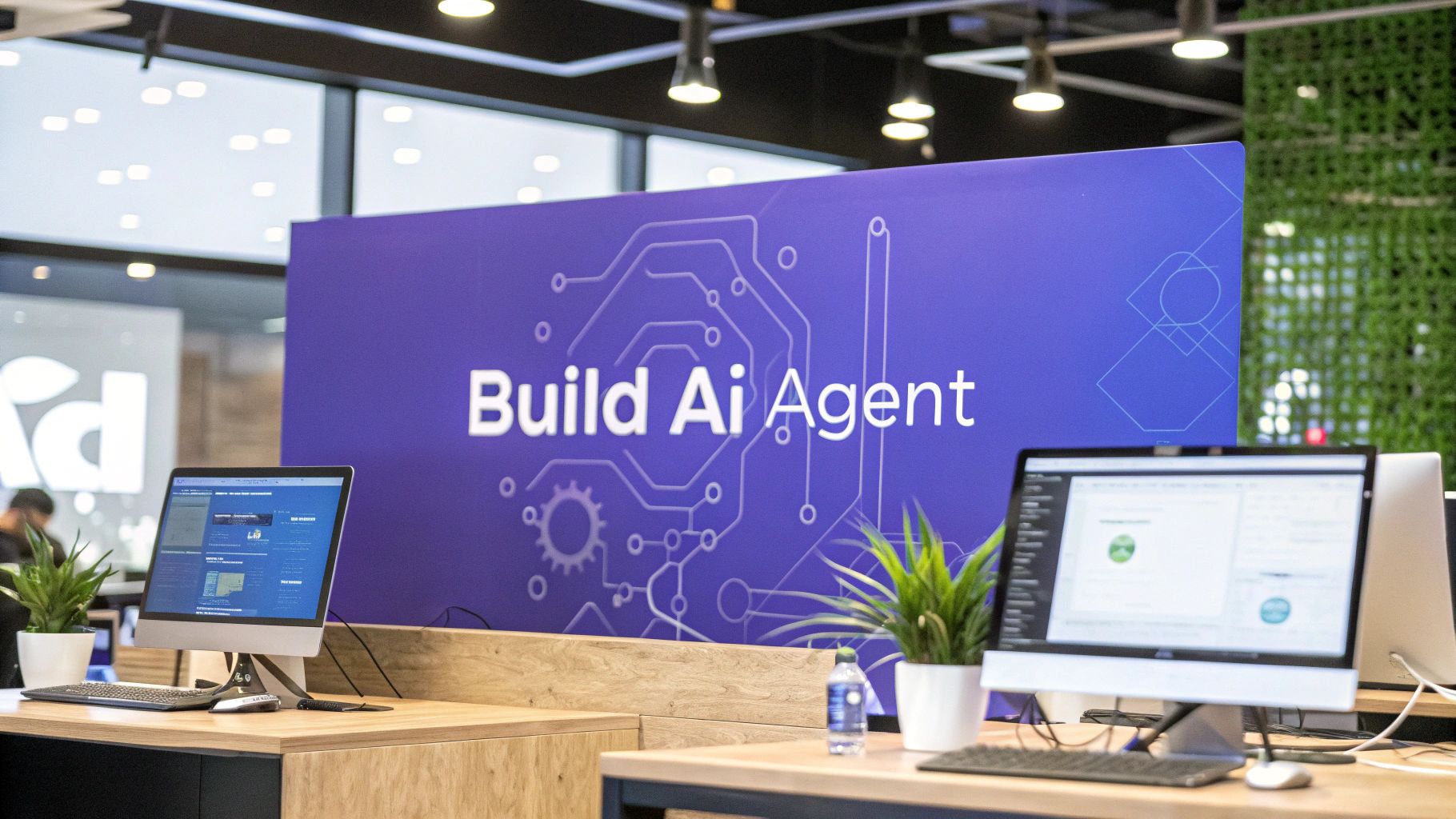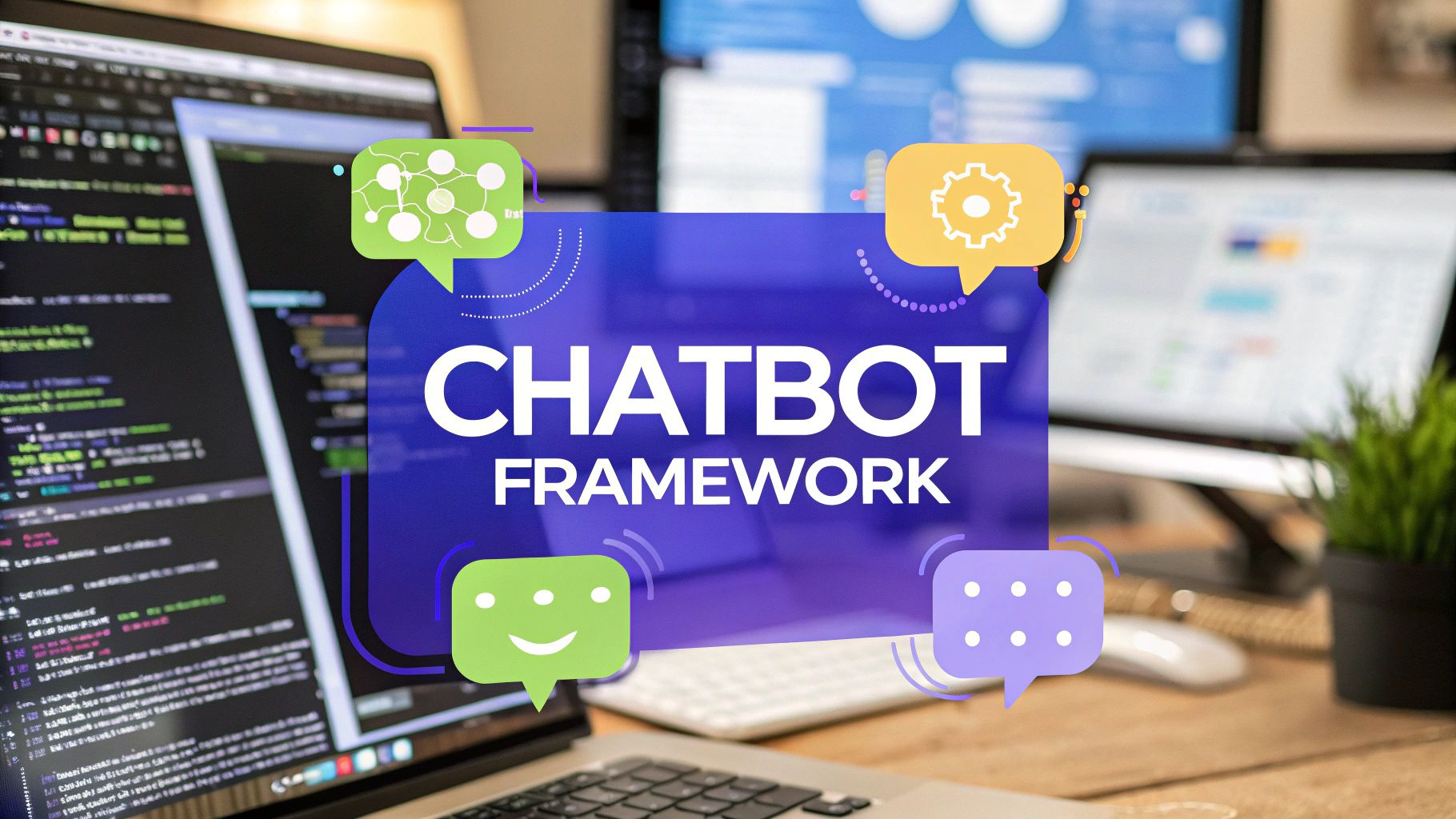What Is a RAG Uncovering Two Key Meanings
What is a RAG? This guide explains the term's dual meaning, from traditional cleaning cloths to the AI technology known as Retrieval-Augmented Generation.

If you’ve heard the term “rag” thrown around lately, you might be picturing two very different things. Is it that old t-shirt you use to clean up spills? Or is it some new AI technology everyone’s talking about?
The answer is both. And yes, it’s a little confusing.
One is a simple, centuries-old tool found in every garage and under every kitchen sink. The other is a sophisticated AI framework that’s changing how we interact with technology. Let's clear up the mix-up once and for all.
The Everyday Cleaning Rag
First, let’s start with the classic. A rag is just a piece of scrap cloth. It’s the cutoff from an old pair of jeans, a retired dish towel, or a t-shirt that’s seen better days. It's the go-to tool for wiping, dusting, and polishing just about anything.
You’ll find them everywhere, from home workshops to professional auto shops, because they’re perfect for:
- Soaking up spills: Their absorbent nature makes them ideal for cleaning up liquids in a pinch.
- Wiping down surfaces: The texture is great for grabbing dust without just pushing it around.
- Polishing and finishing: Mechanics and woodworkers use specific rags to apply waxes and oils for a perfect shine.
This simple tool is all about physical utility. It's tangible, practical, and gets a manual job done.

As you can see, its value comes from its simplicity because it’s reusable, cheap, and effective.
The Advanced AI Technology
Now for the modern definition. In artificial intelligence, RAG stands for Retrieval-Augmented Generation. It’s a game-changing method that makes AI models smarter and more reliable.
Think of it this way: RAG gives an AI model an "open-book test." Instead of only relying on the information it was trained on, it can pull fresh, relevant data from external sources before it gives you an answer. This makes sure the information is up-to-date, accurate, and specific to your question. We’ll cover much more about how this works later on.
Two Definitions of RAG at a Glance
To make the distinction crystal clear, it helps to see the two meanings side-by-side. One is about physical work, and the other is about processing information.
While they share the same name, their purposes couldn't be more different. Knowing which "rag" someone is talking about is important, especially as the AI version becomes a standard term in the tech world.
The Original RAG: A History of the Humble Cloth

Before RAG meant anything related to AI, it meant something much simpler: a scrap of old cloth. For centuries, these modest pieces of torn-up clothing and linens were the unsung heroes of daily life, used for cleaning, wiping, and polishing just about everything.
This was not just about being tidy; it was about survival. Textiles were incredibly valuable and took a ton of labor to produce, so nothing went to waste. A piece of fabric lived many lives, starting as a shirt or sheet and ending its days as a trusty tool in a home or workshop. It’s one of the oldest examples of a circular economy in action.
From Household Helper to Industrial Powerhouse
The rag's story didn't end at the front door. It quickly became a vital ingredient for industry, especially for making paper. Long before we started using wood pulp, old cotton and linen rags were the primary source material, creating paper that was far more durable than what we use today.
This demand turned rag collection into a real business. In growing cities, specialized workers known as ragpickers became a necessary, if informal, part of the urban ecosystem. They gathered discarded textiles that would literally fuel the paper mills.
The industry became massive. In the 19th and early 20th centuries, textiles recycling was a major global trade, and rags were at the center of it. In fact, before wood pulp took over, up to 75% of paper in Europe and North America came from recycled cotton and linen rags. It’s a stunning figure that shows just how valuable this simple material was. You can explore more about the history of textile recycling and its economic impact.
Lasting Legacy of the Cloth Rag
When the Industrial Revolution hit, the rag’s importance only grew. Millions of workers in factories and on the railways depended on these cloth scraps to clean heavy machinery, wipe away grease, and handle countless other messy maintenance tasks.
Even now, with all our synthetic fabrics and disposable wipes, the original rag’s journey is a powerful lesson in resourcefulness. It shows how a simple, overlooked item can be the backbone of major economic shifts, a true workhorse that went from the kitchen sink to the factory floor.
Rags in Modern Industry and Cleaning

It’s easy to think of rags as a relic of the past, but the humble rag is still a surprisingly vital tool in today's high-tech world. From bustling auto shops to sterile healthcare facilities, these simple pieces of cloth do jobs that specialized products often can't handle as well.
In any industrial setting, rags are the unsung heroes. Mechanics rely on them to soak up oil and grease, while factory workers use them to wipe down heavy machinery. Their sheer durability and high absorbency make them a practical, low-cost solution for the kind of tough, messy jobs where a flimsy disposable wipe would fall apart in seconds.
The Smart, Sustainable Choice
The modern rag is also a quiet champion of sustainability. A huge portion of industrial wiping cloths, around 60-70%, are actually made from recycled textiles. This gives old clothing and fabric scraps a new lease on life, diverting tons of material from landfills and cutting down the demand for new resources.
This circular approach brings some major wins for businesses:
- Cost-Effectiveness: Using recycled materials makes rags an incredibly affordable option for companies of all sizes.
- Environmental Impact: It’s a simple way to lower waste and support a more sustainable supply chain.
- High Performance: Reclaimed materials like cotton and polyester blends just happen to have excellent cleaning properties.
The global market for industrial cleaning cloths, including rags, was valued at around USD 1.5 billion in 2024. That number speaks for itself; it shows just how massive the ongoing demand is for these simple but effective tools.
Even as automation reshapes industries, the physical rag holds its ground. Of course, efficiency is still the name of the game, which is why many businesses that rely on rags also automate data entry for operational workflows to streamline other parts of their day.
In the end, the rag is proof that sometimes the simplest tool is still the best one for the job.
The New RAG: An Introduction to AI Technology
While a cloth rag is great for cleaning up physical messes, a new kind of RAG is designed to clean up messy digital information. In artificial intelligence, RAG stands for Retrieval-Augmented Generation.
It’s a clever method that makes AI models like chatbots smarter, more accurate, and a whole lot more trustworthy.
Think of a standard Large Language Model (LLM) as a student taking a closed-book exam. It can only answer questions using the information it memorized during its training. That knowledge is huge, but it's frozen in time and can quickly become outdated.
RAG completely changes the rules of the test. It is like giving that same student an open-book exam. Before answering, the AI gets to look up the latest facts from a specific, reliable source, like your company's internal documents or a curated knowledge base.
This simple shift makes sure every answer is fresh, relevant, and grounded in reality.
How RAG Works
The process behind RAG is surprisingly straightforward but incredibly powerful. Instead of just guessing or making up an answer from its old training data, a RAG-enabled system follows two simple steps:
- Retrieve: First, when you ask a question, the system searches a specific data source for the most relevant information. This could be anything from your product manuals to your latest help center articles.
- Generate: Next, it takes the facts it just found and uses them as a guide to generate a well-informed, contextually accurate answer.
This two-step workflow is the key to solving one of the biggest headaches in AI.
By grounding the AI's response in factual, verifiable data, RAG dramatically reduces the risk of "hallucinations," the term for when an AI confidently presents incorrect or fabricated information. This makes the AI's output far more dependable for practical use.
This approach makes AI models significantly more reliable. Let's break down the core differences in a simple table.
Standard LLM vs RAG Approach
The table below highlights how differently a standard LLM and a RAG-enabled LLM handle information when you ask them a question.
As you can see, RAG is a fundamental change that transforms a generic LLM into a specialized expert with direct access to your knowledge.
To go deeper into the technical side, check out this great resource on RAG AI: Making Generative Models Smarter and More Reliable. For a more detailed breakdown, you can learn more about what RAG is and its applications in our complete guide.
Why RAG Technology Matters for AI

Retrieval-Augmented Generation (RAG) is more than another tech acronym. It is the key that’s unlocking AI’s true potential for everyday business use. Think of it as the solution to AI’s “trust problem.”
By connecting generative models to live, real-world information, RAG helps make sure that AI responses are based on verifiable facts, not just creative guesses.
This is where things get really interesting. Imagine a customer support bot that pulls answers directly from your latest product guides, giving customers accurate help instantly. Or a financial tool that summarizes market trends using reports published just minutes ago. These are not sci-fi concepts; they’re happening right now.
A Rapidly Growing Market
It's no surprise the business world is catching on fast. Industries from healthcare to software are adopting RAG to build smarter, more reliable tools. This demand is fueling some serious market growth.
In 2024, the global RAG market was valued at around USD 1.24 billion. By 2034, it’s expected to explode to nearly USD 67.42 billion. That’s a compound annual growth rate of almost 49.12%, which shows just how much businesses are betting on this technology.
This rapid adoption highlights a core business need: AI that can be trusted. RAG delivers by grounding AI-generated content in real-time data, making it a foundational technology for dependable automation.
At its heart, RAG is all about accelerating how we find and use information. Modern tools for AI-powered content creation for research already use similar principles to analyze dense documents in a fraction of the time it would take a human.
It’s also the secret sauce behind today’s most advanced AI assistants. You can see this in action when you learn about the capabilities of AI models like Claude and how they deliver more relevant answers.
In short, RAG matters because it bridges the gap between AI’s raw power and the real-world need for accuracy. It’s what turns a cool tech demo into a tool you can actually count on.
Still Have Questions About RAG?
It's not every day you find yourself comparing cleaning cloths to advanced AI. Let's clear up a few common questions about both.
What's the Real Difference Between a Standard AI Chatbot and One Using RAG?
A standard AI chatbot is like a student who has only ever read a textbook. It knows a ton of information, but its knowledge is frozen in time and limited to what was in the book. If you ask it about something new, it might get the answer wrong or even make something up.
A chatbot using Retrieval-Augmented Generation (RAG), on the other hand, is like that same student having full access to a live library. It can pull up-to-the-minute information from a trusted source before answering your question. This makes its responses far more accurate, relevant, and trustworthy.
With All the Modern Alternatives, Why Do People Still Use Physical Rags?
Good old-fashioned rags aren't going anywhere, and for a few solid reasons. First off, they're incredibly cost-effective. Most are made from recycled textiles, which keeps costs down and is a much better choice for the environment.
They're also tough. Rags are super durable and absorbent, making them perfect for messy industrial jobs like wiping up oil and grease. Their reusability just adds to their appeal, making them a smart, sustainable option for countless businesses.
When you get right down to it, physical rags offer a hard-to-beat mix of affordability, performance, and eco-friendliness. That simple combination is why they still have a firm place in workshops and factories all over the world.
Can RAG Technology Get Rid of AI Hallucinations for Good?
While RAG is one of the best tools we have for fighting AI hallucinations, it doesn't completely eliminate them. It dramatically reduces the chance of an AI making things up by grounding its answers in real data.
Ultimately, the quality of the response still hinges on two things: the quality of the information in its knowledge base and the AI's ability to interpret that data correctly. Still, it's a massive leap forward in making AI a more reliable and factually accurate tool for businesses.
Ready to build an AI chatbot that gives accurate, trustworthy answers? With Chatiant, you can create a custom AI assistant trained on your own website data and documents. Start building your smarter chatbot today.


